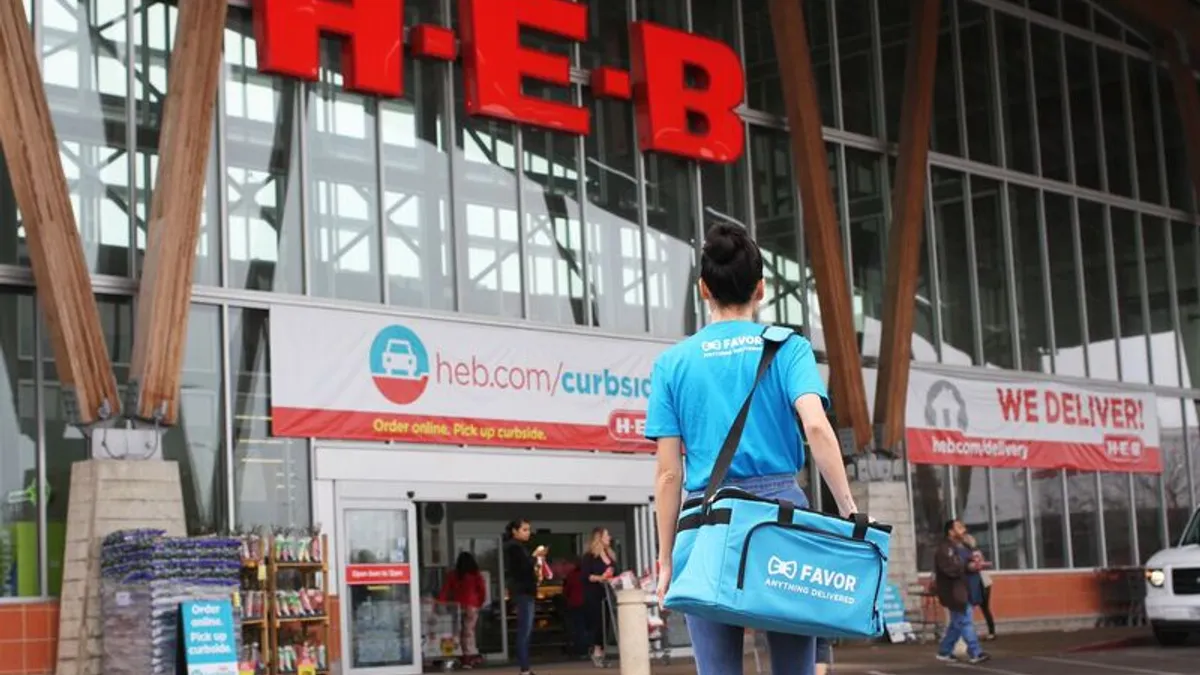Dive Brief:
- Grocery e-commerce sales dropped by 1.2% year-over-year in June, to $7.1 billion, as shoppers completed fewer digital orders during the month on average even as more households shopped online for groceries, according to statistics released Monday by Brick Meets Click and Mercatus.
- Pickup accounted for 49% of grocery e-commerce sales last month, up 2 percentage points compared with the same period in 2022. Delivery, meanwhile, represented just under 35% of online grocery sales in June, down half a percentage point from the same month last year.
- Pickup and delivery sales together accounted for 10% of grocery spending in June, a decline of 1.6 percentage points compared with June 2022.
Dive Insight:
Online grocery sales have been eroding in 2023 as the COVID-19 pandemic drove a surge in digital sales that has given way to a pattern defined by people’s desire to shop in brick-and-mortar stores, the figures from Brick Meets Click and Mercatus suggest.
But while overall digital grocery sales were off by 1.8% during the first six months of 2023 compared with the first half of last year, patterns varied depending on the fulfillment method, the firms reported in a press release. Delivery sales fell 2% during the period, and ship-to-home sales — which comprises orders sent to shoppers via common carriers like FedEx and UPS — sank 9%. At the same time, however, pickup sales moved up 1.3%, suggesting that shoppers particularly like the combination of convenience and lower fees the channel offers.
“Pickup’s stronger performance isn’t surprising as it is becoming more widely available and helps customers who want to shop online save money, which is certainly helpful in the current market,” David Bishop, partner at Brick Meets Click, said in a statement.
Pickup sales were up 3.2% year-over-year in June — a gain Brick Meets Click and Mercatus attributed primarily to a growing number of monthly active users for the channel, which some grocers have opted to make available to shoppers without a fee. The firms noted, however, that the average value of pickup orders was off slightly during the month.
By comparison, the average order value for delivery orders was up 7% in June, while the figure for the ship-to-home segment declined 1%.
The gain pickup recorded in June builds on the 9.1% increase in pickup sales the grocery industry saw in May when the channel accounted for more than half of grocery e-commerce sales.
Brick Meets Click and Mercatus also found that online customer engagement stabilized in June — halting a three-month decline. The overall repeat intent rate came in at 63%, the same as the level in June 2022, but more than 10 percentage points below where it was before the pandemic.
The disparity is particularly notable given that shoppers who direct repeat digital business to the same retailer tend to spend significantly more than other consumers, the research suggests. Customers who used an online grocery service operated by a grocer or mass merchant at least four times during the prior three months had an average order value that was 57% above people who used the same service for the first time, according to the research.
“To elevate customer engagement, regional grocers need to improve the perceived value associated with the online shopping experience,” Sylvain Perrier, president and CEO of Mercatus, said in a statement. “To achieve this, grocers can focus their efforts on areas like leveraging personalized recommendation algorithms to provide more relevant product suggestions based on individual preferences and past purchases, optimizing the platform’s usability to reduce points of friction, and offering personalized discounts, digital coupons, and loyalty rewards.”













